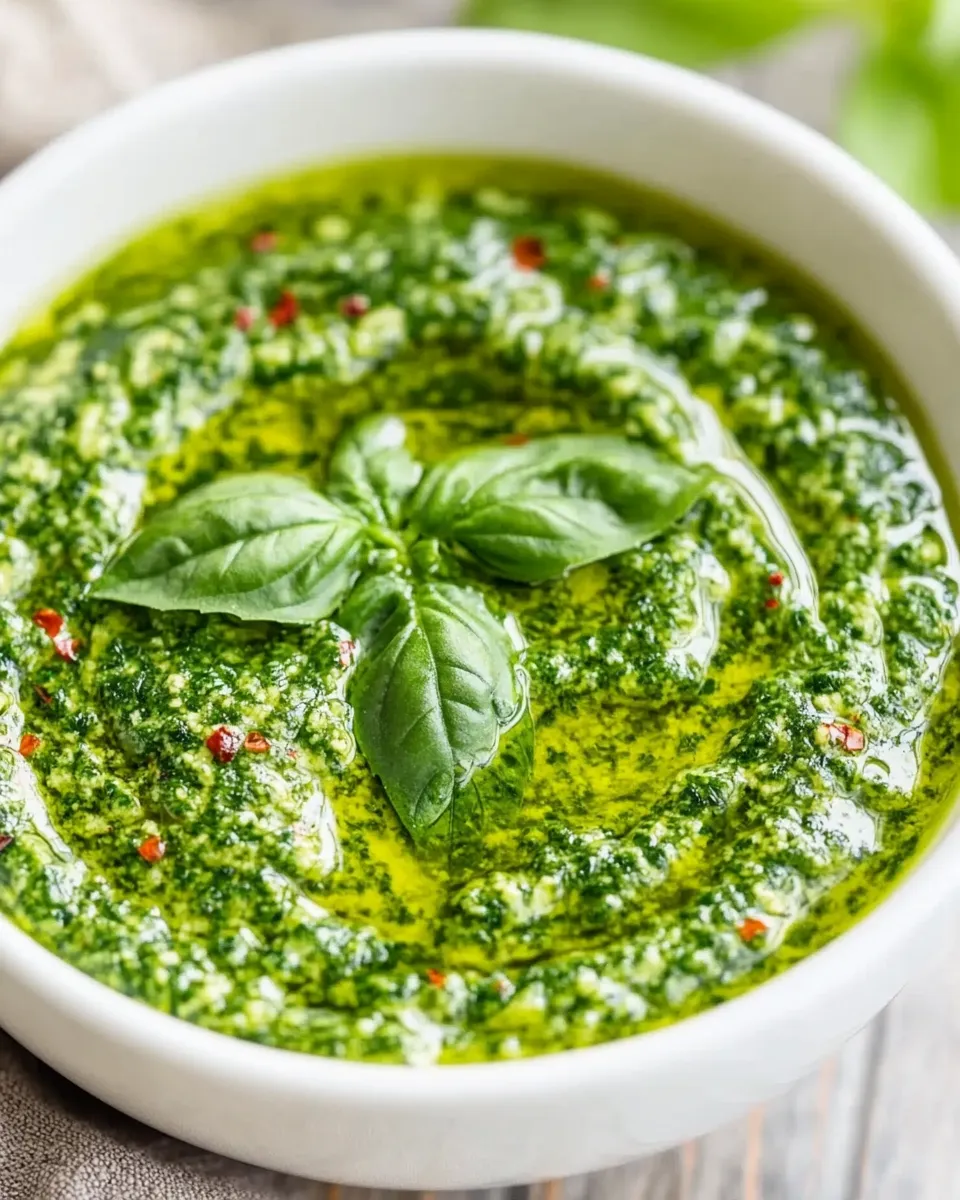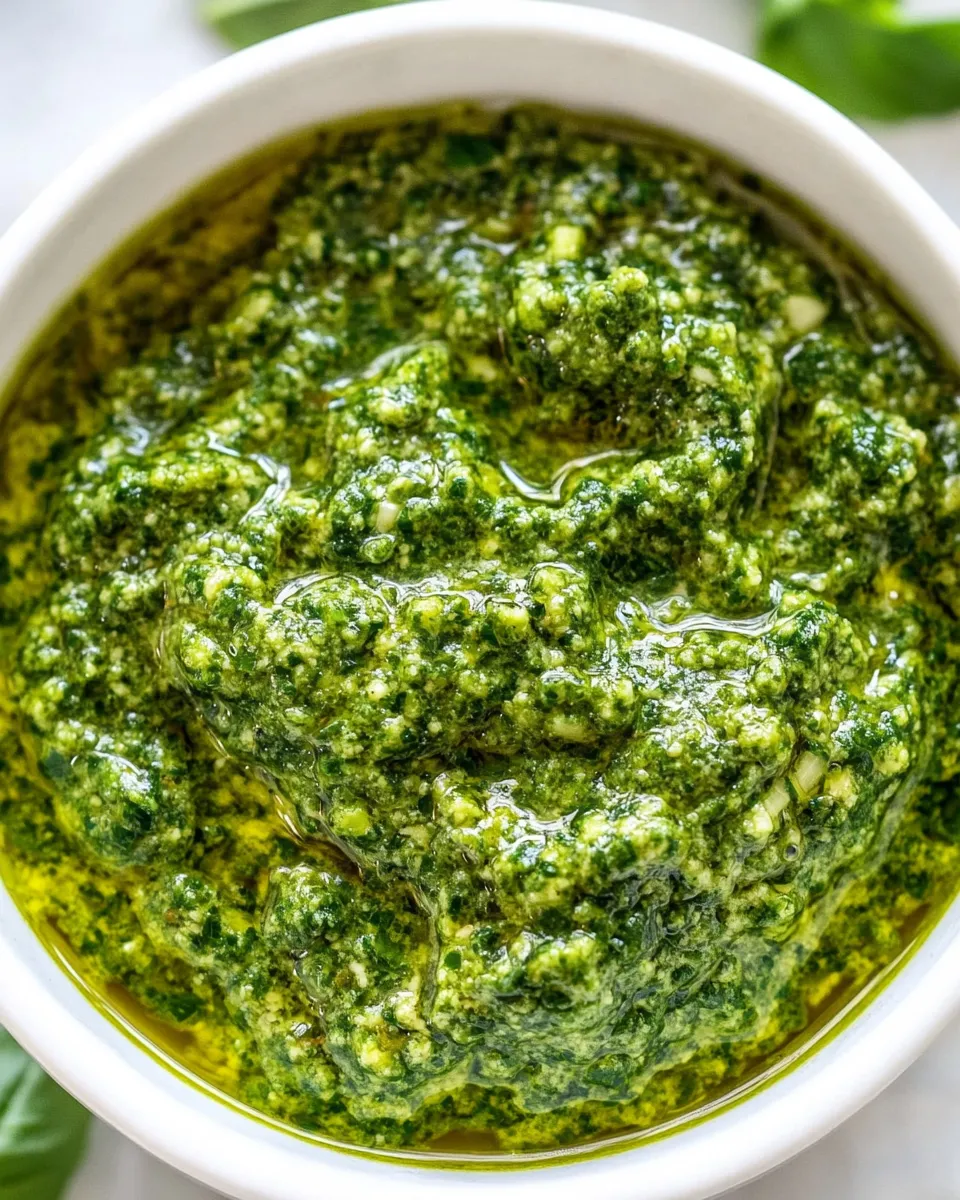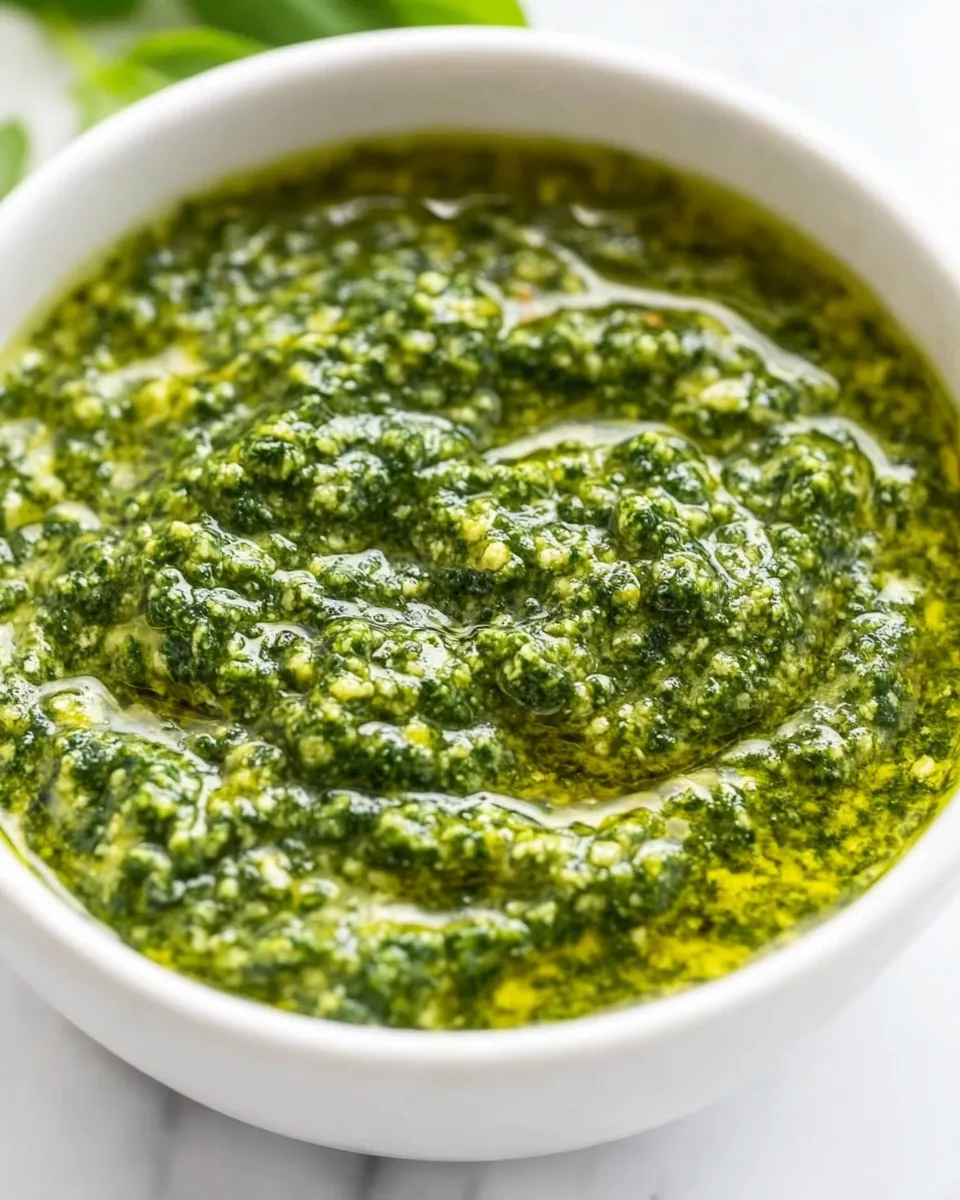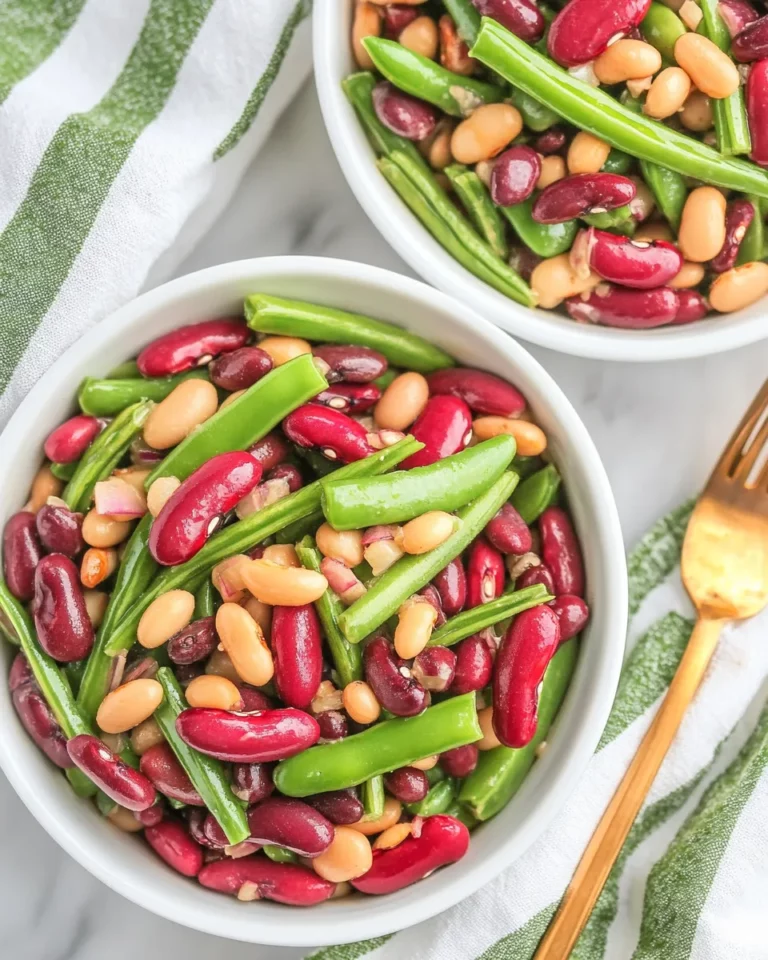Homemade Basil Pesto
Pesto is one of those magical sauces that instantly transforms any dish from ordinary to extraordinary. Its vibrant green color, fresh herbal aroma, and rich, nutty flavor make it an absolute kitchen staple. Making basil pesto at home is easier than you might think, and the freshness you get from homemade versus store-bought is unbeatable. This recipe is simple, quick, and uses just a handful of wholesome ingredients to create a sauce that’s perfect for pasta, sandwiches, salads, or even as a dip. Let’s dive into this classic Italian condiment and learn how to make your very own homemade basil pesto!
Why This Recipe Is a Must-Try
Basil pesto is beloved worldwide for a reason. It’s fresh, fragrant, and incredibly versatile. The combination of fresh basil leaves, nutty pine nuts, sharp garlic, and savory Parmesan cheese blended with rich extra-virgin olive oil creates a flavor profile that’s bright and indulgent at the same time. Making pesto at home allows you to control the quality of ingredients, skip preservatives, and adjust flavors to your liking. Plus, it’s a fantastic way to use up an abundance of fresh basil during the growing season. Whether you’re tossing it into pasta, spreading it on a crusty baguette, or dolloping it on grilled vegetables, this pesto will elevate your meals to a new level of deliciousness.
Ingredients
- 2 cups fresh basil leaves – Just the leaves, no stems. Use bright, vibrant leaves for the best flavor.
- ¼ cup pine nuts – These add a subtle nuttiness. You can lightly toast them for extra flavor.
- 1 clove garlic – Fresh garlic adds a pungent kick to the pesto.
- ½ cup freshly grated Parmesan cheese – Use good quality Parmesan for a rich, salty taste.
- ¼ teaspoon ground black pepper – Adds a gentle heat and depth.
- ½ teaspoon salt – Enhances all the flavors in the pesto.
- ½ cup extra-virgin olive oil – This binds everything together and adds richness.
How To Make Homemade Basil Pesto

Step 1: Prep Your Ingredients
Start by washing your fresh basil leaves thoroughly and patting them dry. It’s important that the leaves are dry to avoid a watery pesto. Lightly toast the pine nuts in a dry skillet over medium heat for 2-3 minutes until fragrant and golden, stirring frequently to prevent burning. Peel the garlic clove and grate or finely chop the Parmesan cheese.
Step 2: Blend the Basil, Pine Nuts, and Garlic
In a food processor or blender, combine the basil leaves, toasted pine nuts, and garlic clove. Pulse a few times until the ingredients are roughly chopped and combined. This initial blending helps break down the ingredients evenly.
Step 3: Add Cheese, Salt, and Pepper
Add the freshly grated Parmesan cheese, salt, and ground black pepper to the mixture. Pulse again to incorporate everything together. The cheese will help thicken the pesto and add a savory depth.
Step 4: Slowly Add Olive Oil
With the food processor running on low speed, slowly drizzle in the extra-virgin olive oil. This slow addition helps emulsify the pesto, creating a smooth and creamy texture. Stop and scrape down the sides as needed to ensure everything is evenly blended.
Step 5: Taste and Adjust
Give your pesto a taste. If it needs more salt, pepper, or garlic, add it now and pulse again briefly. The pesto should be bright, fresh, and balanced between the herbaceous basil, the nuttiness of the pine nuts, and the salty Parmesan.
Step 6: Serve or Store
Use your basil pesto immediately tossed with pasta, spread on fresh bread, or as a sauce for grilled veggies or chicken. If you’re not using it right away, store it in an airtight container (see the storage tips below).
Expert Tips

- Use fresh, vibrant basil: Fresh basil is the star of this recipe. Avoid wilted or brown leaves for the best flavor and color.
- Toast pine nuts lightly: Toasting pine nuts brings out their natural oils and adds a deeper nutty flavor to your pesto.
- Grate your own Parmesan: Pre-grated cheese often contains additives. Freshly grated Parmesan melts better and tastes more authentic.
- Add oil slowly: Gradually adding olive oil helps create a smooth, emulsified pesto rather than a greasy one.
- Don’t over-process: Pulse the ingredients to maintain a nice texture. Over-blending can make the pesto too mushy.
- Keep it green: To prevent your pesto from browning, add a squeeze of lemon juice or cover the surface with a thin layer of olive oil before storing.
Variations and Customizations

- Nut substitutes: If you’re allergic to pine nuts or want a different flavor, try walnuts, almonds, or cashews instead.
- Dairy-free option: Omit Parmesan and add nutritional yeast for a cheesy flavor without dairy.
- Garlic intensity: Adjust the garlic amount to suit your taste. Roasted garlic can be used for a milder, sweeter flavor.
- Herb twists: Mix in fresh parsley, cilantro, or mint for a unique twist on classic pesto.
- Spicy kick: Add a pinch of red pepper flakes or a small piece of fresh chili to the blend for some heat.
- Cheese swaps: Try Pecorino Romano in place of Parmesan for a sharper, saltier flavor.
How to Store Leftovers
To keep your homemade basil pesto fresh and vibrant, transfer it to an airtight container. Pour a thin layer of extra-virgin olive oil over the top to create a seal that prevents oxidation and browning. Store the container in the refrigerator, where it will last for up to one week. For longer storage, pesto freezes beautifully—portion it into ice cube trays and freeze. Once frozen, transfer the cubes to a freezer-safe bag and store for up to three months. When ready to use, simply thaw in the fridge or stir frozen cubes directly into hot pasta or dishes.
FAQ
Can I use other nuts instead of pine nuts?
Absolutely! Walnuts, almonds, and cashews are great alternatives that add their own unique flavors and textures to pesto. Just toast them lightly before blending for the best taste.
Is it necessary to use Parmesan cheese?
Parmesan cheese adds saltiness and depth, but if you prefer a dairy-free version, you can substitute nutritional yeast or simply omit the cheese altogether. The pesto will still be delicious but with a slightly different flavor profile.
How can I keep my pesto from turning brown?
Pesto oxidizes quickly when exposed to air, which can cause browning. To prevent this, press a thin layer of olive oil on the surface before sealing it in an airtight container. You can also add a small squeeze of lemon juice to help preserve the vibrant green color.
What dishes go best with basil pesto?
Basil pesto is incredibly versatile! Toss it with pasta, spread it on sandwiches, dollop it over grilled chicken or fish, stir it into soups, or use it as a dip for fresh veggies and bread. It also pairs wonderfully with roasted potatoes and as a topping for pizzas.
Conclusion
Homemade basil pesto is a simple yet sensational sauce that brings fresh, vibrant flavor to so many dishes. With just a handful of wholesome ingredients and a few minutes in the food processor, you can create a versatile condiment that elevates everyday meals. Whether you’re a seasoned cook or a kitchen newbie, this recipe is easy to master and endlessly adaptable. So next time you have a bunch of fresh basil on hand, whip up a batch of this homemade pesto and savor the taste of summer all year round!

Homemade Basil Pesto
Ingredients
- 2 cups fresh basil leaves just the leaves, no stems
- 1/4 cup pine nuts lightly toasted for extra flavor
- 1 clove garlic fresh
- 1/2 cup Parmesan cheese freshly grated, good quality
- 1/4 teaspoon ground black pepper
- 1/2 teaspoon salt
- 1/2 cup extra-virgin olive oil
Instructions
- Start by washing your fresh basil leaves thoroughly and patting them dry to avoid a watery pesto. Lightly toast the pine nuts in a dry skillet over medium heat for 2-3 minutes until fragrant and golden, stirring frequently. Peel the garlic clove and grate or finely chop the Parmesan cheese.
- In a food processor or blender, combine the basil leaves, toasted pine nuts, and garlic clove. Pulse a few times until the ingredients are roughly chopped and combined.
- Add the freshly grated Parmesan cheese, salt, and ground black pepper to the mixture. Pulse again to incorporate everything together.
- With the food processor running on low speed, slowly drizzle in the extra-virgin olive oil. Stop and scrape down the sides as needed to ensure everything is evenly blended and emulsified into a smooth and creamy texture.
- Taste your pesto and adjust seasoning by adding more salt, pepper, or garlic as needed, pulsing briefly to combine.
- Use your basil pesto immediately tossed with pasta, spread on fresh bread, or as a sauce for grilled vegetables or chicken. Store leftovers in an airtight container with a thin layer of olive oil on top in the refrigerator for up to one week, or freeze for longer storage.
Equipment
- Food Processor
- Skillet








